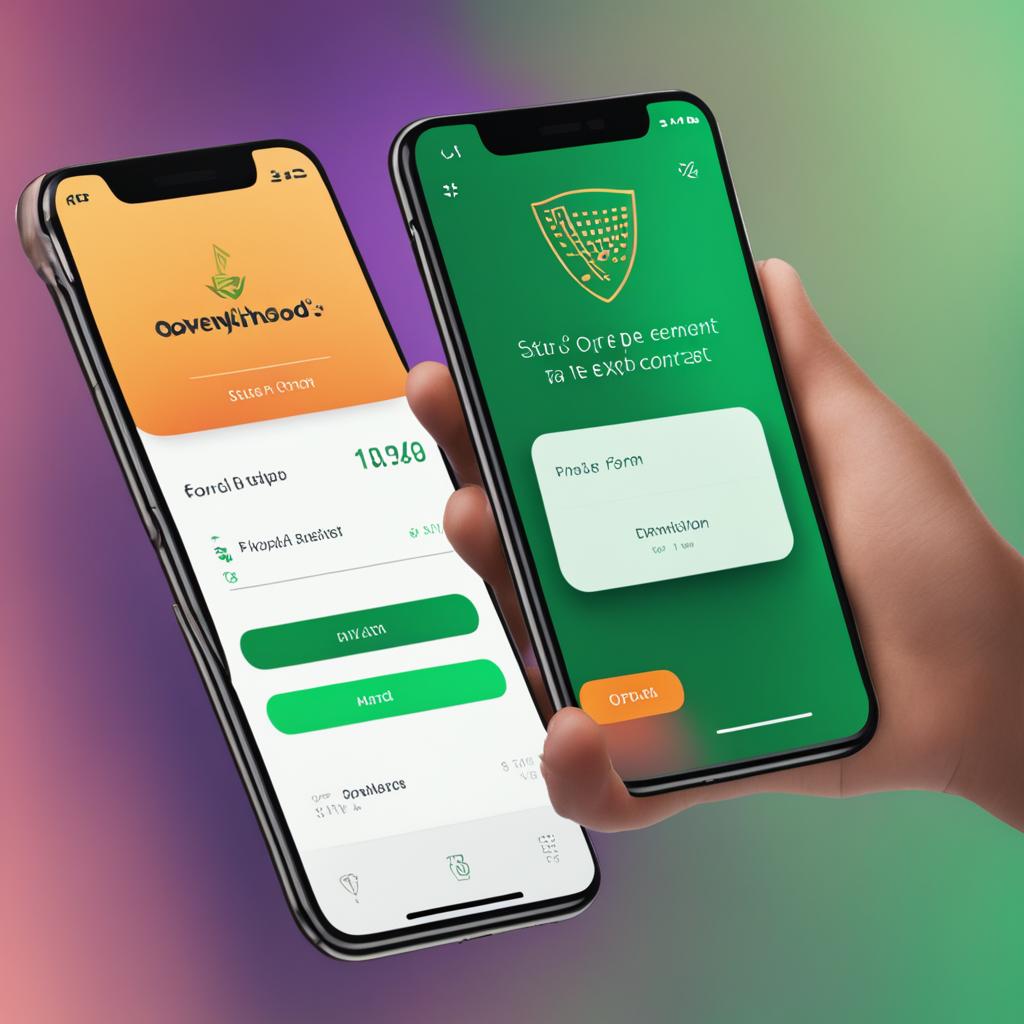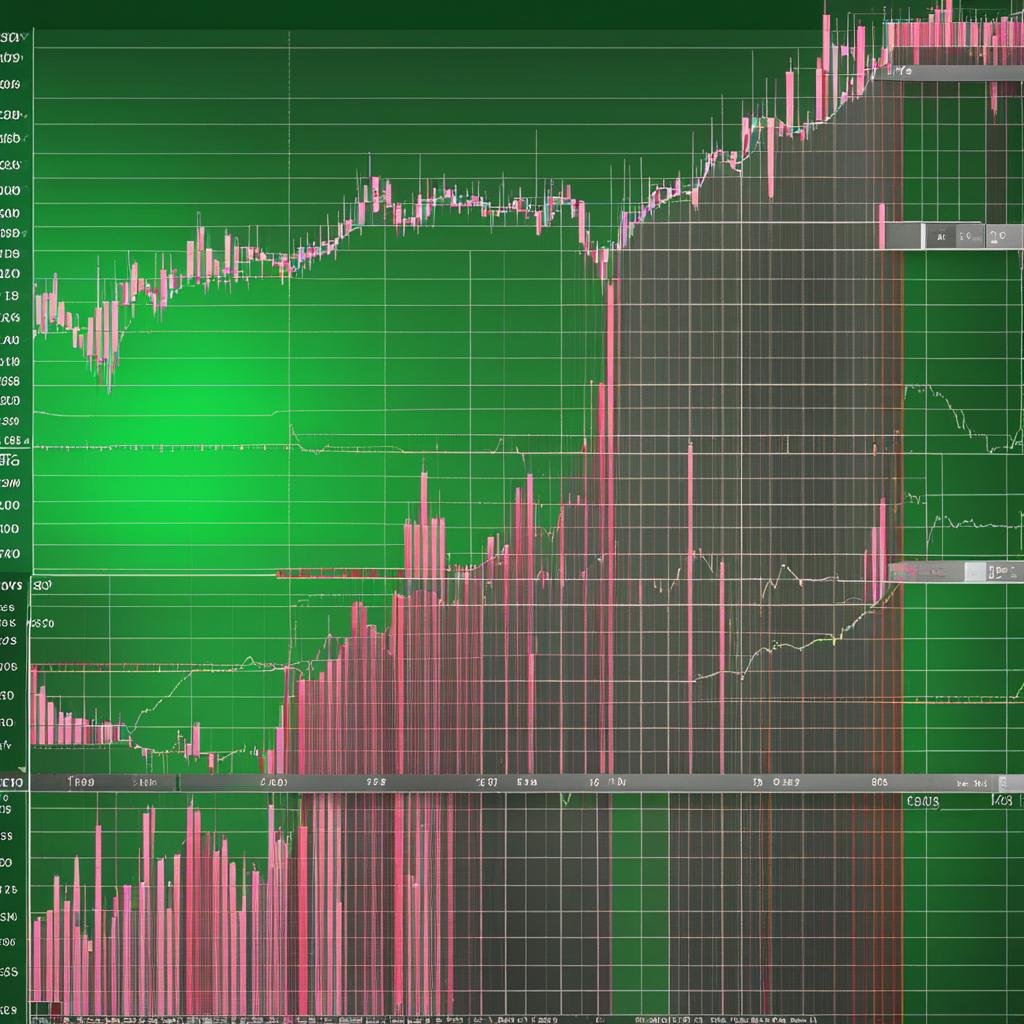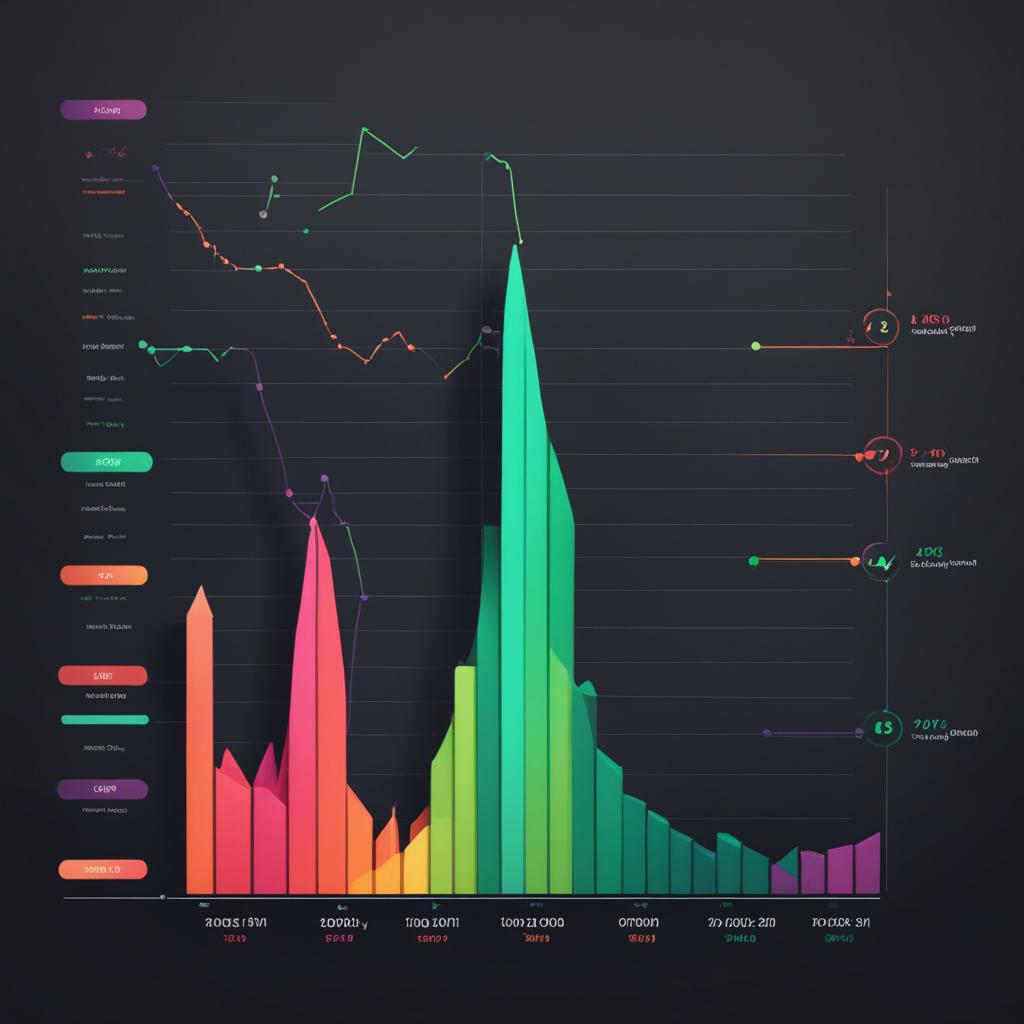Welcome to my beginner’s guide to trading options on Robinhood! If you’re new to options trading or want to learn how to trade options on the Robinhood platform, you’ve come to the right place. In this tutorial, I will walk you through the process of trading options on Robinhood, from opening an account to placing orders and choosing the right options for your trades.
Robinhood is a popular and user-friendly brokerage platform that offers commission-free trading, making it accessible to everyone. With Robinhood, you can trade options on stocks and ETFs, giving you the opportunity to profit from market movements without owning the underlying asset.
Options trading can be a powerful tool for investors, allowing you to potentially generate income, hedge your portfolio, or speculate on market movements. However, it’s important to understand the risks involved and educate yourself on options trading strategies.
In this tutorial, I will provide step-by-step instructions on how to trade options on Robinhood, explain the different elements you need to consider when placing an options trade, and offer some tips to help you navigate the options trading platform effectively.
Key Takeaways:
- To trade options on Robinhood, use the search bar to find the stock or ETF you want and select “Trade Options.”
- Consider factors such as expiration date, strike price, premium, and chance of profit percentage before placing a trade.
- You can place Good-til-canceled (GTC) or Good-for-day (GFD) orders on options.
- Options prices can be viewed in natural price or mark price, which represents the midpoint between the ask and bid prices.
- Robinhood assigns different options trading levels based on factors such as trading experience and financial situation.
Placing an Options Trade on Robinhood
To place an options trade on Robinhood, follow these steps:
- Use the search bar to find the stock or ETF you want to trade options on.
- Select the stock or ETF from the search results to go to its detail page.
- On the detail page, look for the “Trade Options” button and click on it.
- A new screen will appear showing the available options for that security.
- Consider factors such as the expiration date, strike price, premium, and chance of profit percentage before placing a trade.
- Once you have selected the specific options contract you want, review the details and pricing.
- If everything looks good, click on the “Trade” button to execute the options trade.
It’s important to carefully analyze and understand the options you are trading before placing a trade. Take into account the different factors that can impact the outcome of your trade, such as the expiration date, strike price, premium, and chance of profit percentage. Conduct thorough research and consider any market trends or news that may affect the underlying security.
Placing an options trade on Robinhood is a straightforward process, but it’s essential to make informed decisions and manage your risk effectively. Consult with financial professionals or educate yourself on options trading strategies to maximize your potential for success.
Choosing an Option on Robinhood
When trading options on Robinhood, it is crucial to make thoughtful and informed decisions to maximize your chances of success. Consider the following factors when choosing an option:
- Expiration Date: The expiration date indicates when the option contract will expire. You can find this information below the strategy and underlying security. Scroll right to see future expirations and select the most suitable one for your trading strategy.
- Strike Price: The strike price is the predetermined price at which the option can be exercised. On Robinhood, strike prices are listed from high to low. Scroll up or down to explore different strike prices and pick the one that aligns with your strategy.
- Premium: The premium is the cost of the option contract. It is displayed on the right side of the screen. Consider the premium in relation to your budget and the potential profits you anticipate.
- Chance of Profit Percentage: Robinhood provides the chance of profit percentage, which represents the probability of making a profit at the current mark price. This metric can help you assess the potential success of the option trade.
By taking these factors into account, you can make well-informed decisions when selecting options on Robinhood and increase your chances of achieving your trading goals.
Key Takeaway:
When choosing options on Robinhood, carefully consider the expiration date, strike price, premium, and chance of profit percentage. These key factors will help guide your decision-making and increase your chances of success in options trading.
Placing Orders on Robinhood
When trading options on Robinhood, it’s important to understand how to place orders effectively. Whether you’re buying, selling, or managing your existing positions, Robinhood provides a streamlined process for executing your trades.
On Robinhood, you have the option to place two types of orders: Good-til-canceled (GTC) and Good-for-day (GFD) orders. GTC orders remain open until filled or canceled within a 90-day period, while GFD orders are automatically canceled if they don’t execute by market close.
To place an order on Robinhood, follow these steps:
- Open the Robinhood app and select the stock or ETF you want to trade options on.
- Swipe right to buy or open an existing position, or swipe left to sell or close an existing position.
- If you want to cancel or replace a pending order, swipe right.
- Ensure that you update the trade details, such as the quantity, strike price, and expiration date.
- Once you’ve reviewed and confirmed the trade details, swipe up to submit the order.
It’s essential to pay attention to the trade details to accurately execute your options orders. Double-check the quantity and strike price to avoid any mistakes that could affect your trade’s outcome.
By following these simple steps, you can easily place orders and manage your options trading on Robinhood.
Example:
“I found it straightforward to place orders on Robinhood. The intuitive interface allowed me to quickly navigate through the app and execute my trades without any hassle. I appreciated the option to set GTC or GFD orders, giving me flexibility in managing my positions according to my trading strategy. With a few simple swipes and a final submission, my orders were swiftly executed. Placing orders on Robinhood has made my options trading experience efficient and convenient.”
– Jane Doe, Options Trader
| Order Type | Order Duration | How to Place Order |
|---|---|---|
| Good-til-canceled (GTC) | Remains open until filled or canceled within 90 days | Swipe right to buy or open an existing position, swipe left to sell or close an existing position |
| Good-for-day (GFD) | Automatically canceled if not executed by market close | Swipe right to cancel or replace a pending order |

Understanding Price and Percent Change on Robinhood
When trading options on Robinhood, it’s essential to understand how to interpret price and percent change information. The platform offers two different types of prices: natural price and mark price.
Natural price refers to the ask price when buying an option or the bid price when selling an option. It represents the price at which market participants are willing to transact.
On the other hand, mark price is the midpoint between the ask and bid prices. Robinhood uses the mark price for simplicity and ease of understanding. It helps you assess the movement and cost of the option without getting overwhelmed by bid and ask prices.
The price and percent change information are crucial indicators of an option’s performance. It allows you to track the changes in the option’s value over time and evaluate its profitability potential. Keep in mind that the percent change represents the relative change in the option’s price, expressed as a percentage.
Understanding price and percent change is essential for making informed decisions in options trading. It enables you to analyze the movement and cost of the options you’re interested in, helping you gauge their potential profitability.
It’s worth noting that if there are no bids for an option, the mark price may show as $0.01. This can occur when there is low liquidity or limited trading activity in that particular option.
Example:
Let’s say you’re considering buying a call option for a stock. The natural price for the call option might be $2.50, but the mark price could be $2.45. The percent change might show a positive value if the mark price increased from the previous trading day.
Understanding the price and percent change helps you assess the current value of the option and make informed decisions based on your trading strategy.

| Option Price Type | Definition |
|---|---|
| Natural Price | The ask price when buying an option or the bid price when selling an option |
| Mark Price | The midpoint between the ask and bid prices, used for simplicity |
| Percent Change | The relative change in the option’s price, expressed as a percentage |
Understanding price and percent change is key to navigating options trading on Robinhood effectively. It allows you to evaluate the value and profitability potential of options in your portfolio.
Options Trading Levels on Robinhood
When it comes to options trading on Robinhood, different trading levels are assigned to users based on their trading experience, investment objectives, and financial situation. These levels determine the types of options strategies that you can execute on the platform.
Level 2 Designation
If you have a Level 2 designation on Robinhood, you have access to basic options strategies. These include:
- Long calls
- Covered calls
- Long puts
With Level 2, you can take advantage of these strategies to participate in bullish or bearish market movements and manage risk accordingly.
Level 3 Designation
For more advanced options trading strategies, a Level 3 designation is required on Robinhood. With Level 3, you have access to advanced strategies such as:
- Credit spreads
- Debit spreads
- Iron condors
- Iron butterflies
These strategies offer more flexibility and allow you to implement more complex trading techniques to potentially profit from market volatility and specific market conditions.
It’s important to note that each brokerage sets its specific parameters for these trading levels, so they may vary slightly from one platform to another.
Understanding Options Trading Levels
Options trading levels are designed to ensure that traders have the necessary knowledge and experience to handle the risks associated with various options strategies. They help protect traders from potentially catastrophic losses and allow them to gradually progress as they become more proficient and knowledgeable.
By adhering to the trading levels set by Robinhood and other brokerages, traders can make informed decisions and better navigate the complexities of options trading.

| Options Trading Levels | Required Trading Experience and Knowledge | Authorized Strategies |
|---|---|---|
| Level 2 | Basic understanding of options |
|
| Level 3 | Intermediate to advanced options trading knowledge |
|
Day Trading and Pattern Day Trade Restrictions on Robinhood
Day trading on Robinhood is an active trading strategy that involves buying and selling the same options contract on the same day. However, it’s important to understand the pattern day trade restrictions that apply on Robinhood.
Pattern day trade restrictions limit you to no more than 3 day trades in a 5 trading day period. A day trade is defined as opening and closing the same options contract in a single trading day. If you execute more than 3 day trades within 5 trading days and have less than $25,000 of portfolio value in your margin account, you will be flagged as a pattern day trader.
Pattern day traders are subject to additional requirements and restrictions. To continue day trading, you will need to maintain a minimum account value of $25,000. If your account falls below this threshold, you will be restricted from day trading until the account value is increased.
It’s important to note that these restrictions do not apply to cash accounts. Cash accounts are not subject to pattern day trade restrictions but have limitations on trading with unsettled funds. If you’re new to day trading or have a smaller account, consider starting with a cash account to avoid pattern day trade restrictions.
Make sure to familiarize yourself with the day trading rules on Robinhood to avoid any compliance issues. Compliance with these rules will help ensure a smooth trading experience.
Trading involves risk, and day trading can be particularly risky. It’s important to have a solid understanding of the strategies, risks, and market conditions before engaging in day trading on Robinhood or any other platform.
Advantages of Day Trading on Robinhood
- No trading commissions: Robinhood offers commission-free trading, which means you can execute multiple day trades without incurring any additional fees.
- User-friendly interface: The Robinhood app provides an intuitive and easy-to-use interface, making it accessible for both beginner and experienced traders.
- Convenience: With the Robinhood app, you can trade options on the go, allowing you to take advantage of market opportunities wherever you are.
Day trading on Robinhood can be an exciting and potentially profitable venture. However, it’s essential to approach it with caution, adhere to the pattern day trade restrictions, and carefully manage your risk. By staying informed and following the rules, you can make the most of your day trading experience on Robinhood.
| Pros | Cons |
|---|---|
| No trading commissions | Pattern day trade restrictions |
| User-friendly interface | Risks associated with day trading |
| Convenience | Market volatility |
Before you start day trading on Robinhood, it’s essential to conduct thorough research, develop a solid trading plan, and practice risk management strategies. Remember to trade responsibly and seek professional advice if needed.
Opening a Robinhood Account
Opening a Robinhood account is a simple process that allows you to start exploring the world of investing. Here’s a step-by-step guide on how to open a Robinhood account:
- Download the Robinhood app or visit the Robinhood website on your computer.
- Fill out the required information to create your account. This includes providing your name, email address, and a password.
- Verify your identity by providing personal information such as your date of birth and social security number. Robinhood takes privacy and security seriously, ensuring that your information is protected.
- Provide your address to complete the identity verification process.
- Enter your financial information, including your bank account balances and employment status. This information is necessary for Robinhood to assess your suitability and risk.
- Review and agree to the terms and conditions. Make sure to read through the terms carefully to understand the agreement.
- Fund your account through a secure connection. Robinhood offers various funding methods, including linking your bank account or transferring funds from an existing brokerage account.
- Once your account is funded, you’re ready to start exploring the features and trading options available on Robinhood.
By following these simple steps, you can quickly open a Robinhood account and begin your journey as an investor. Take advantage of the user-friendly platform and commission-free trading to grow your wealth and achieve your financial goals.

With Robinhood, the power to invest is in your hands. Open an account today and start trading with confidence!
Enabling Option Trading on Your Robinhood Account
During the account sign-up process on Robinhood, you’ll be asked questions about option trading and your preferred level of permissions. This is done to assess your financial status and risk level. If you are initially identified as high risk, don’t be discouraged. You may still be approved for options trading after making several trades and demonstrating responsible trading behavior.
Once you are eligible for options trading, you can enable it by adjusting your account settings. Here’s how:
- Open the Robinhood app on your mobile device.
- Tap on the “Investing” tab at the bottom of the screen.
- Scroll down and select “Options.”
- Tap on “Settings”, which is represented by a gear icon.
- Under the “Options Trading” section, toggle the switch to enable option trading on your account.
Enabling option trading on your Robinhood account opens up a world of opportunities to explore and engage in options trading. Remember to always educate yourself, stay informed about market trends, and understand the risks involved. With careful planning and strategic decision-making, you can take advantage of the potential benefits that options trading offers.
Using the Robinhood App for Options Trading
When it comes to options trading, the Robinhood app provides a user-friendly interface that makes it easy to navigate and execute trades. Whether you’re a beginner or an experienced trader, the app offers a streamlined experience to help you make informed decisions about your options trades.
Before placing any trades, it’s crucial to research and understand the options you want to trade. Take the time to analyze the underlying stock or ETF, the expiration date, the strike price, and the premium. By thoroughly researching your options, you can make more informed decisions and increase your chances of success.
The Robinhood app provides quote data and order functions that are essential for executing trades. Keep in mind that bid and ask prices can fluctuate, so it’s crucial to pay attention to these prices when entering or exiting a trade. Staying vigilant about the bid and ask prices can help you secure the best possible execution for your trades.
Now, let’s take a look at an example of how the Robinhood app displays option quotes:
| Option | Last Price | Volume | Bid | Ask |
|---|---|---|---|---|
| XYZ Call Option – 01/01/2024 | 2.50 | 100 | 2.40 | 2.60 |
| XYZ Put Option – 01/01/2024 | 1.80 | 50 | 1.70 | 1.90 |
Always remember to thoroughly research your options and their associated costs before executing trades on the Robinhood app. By doing so, you can feel confident in your investment decisions and potentially increase your chances of success in the options market.
Image:
Benefits of Trading Options on Robinhood
Trading options on Robinhood offers numerous benefits and advantages for investors and traders. Let’s explore some of the key reasons why trading options on Robinhood is a popular choice:
- Commission-Free Trading: One of the major advantages of trading options on Robinhood is the absence of trading commissions. This means you can buy and sell options without incurring additional costs, allowing you to maximize your potential profits.
- User-Friendly Mobile App: Robinhood’s mobile app is designed to make investing and trading accessible to everyone. With its intuitive interface and easy-to-use features, navigating the platform and executing options trades has never been simpler.
- Fractional-Share Trading: Robinhood also offers fractional-share trading, which is particularly appealing to small account holders. This feature allows you to invest in a fraction of a share, making it possible to diversify your portfolio even with limited funds.
- Direct Cryptocurrency Access: In addition to options trading, Robinhood provides direct access to cryptocurrencies. This means you can trade digital currencies alongside options, providing you with more investment opportunities and flexibility.
- Cash Management Features: Robinhood’s app includes cash management features that enable you to easily manage your funds. From setting up recurring investments to monitoring your account balance, these features ensure that you have full control over your finances.
With the combination of commission-free trading, a user-friendly mobile app, fractional-share trading, direct cryptocurrency access, and cash management features, Robinhood offers a compelling options trading platform that appeals to a wide range of traders and investors.
Discovering the Advantages of Robinhood
“Robinhood revolutionized the brokerage industry by offering commission-free trading and a user-friendly mobile app.”
Robinhood’s innovative approach to investing has attracted a large and diverse user base. By removing barriers such as trading commissions and providing easy access to a range of financial products, Robinhood has empowered individuals to take control of their financial future.
Whether you are a seasoned options trader or just starting your investment journey, Robinhood offers a range of features and benefits that can enhance your trading experience. Explore the possibilities and seize the opportunities that options trading on Robinhood can provide.
Overview of Options Trading
Options trading provides investors with the opportunity to trade transferable contracts that give them the right, but not the obligation, to buy or sell a security at a predetermined price until the option expires. By understanding the basics of options trading, investors can potentially benefit from leveraging their trades to maximize returns.
Options trading involves the buying and selling of options contracts, which can be based on individual stocks, exchange-traded funds (ETFs), or other securities. These contracts allow traders to speculate on the future price movement of the underlying asset without actually owning it.
One of the key advantages of options trading is leverage. By controlling a larger amount of shares with a smaller investment, options traders can amplify their profits if the market moves in their favor. However, it is essential to understand that options trading can also entail significant risks and potential losses if not properly managed. Traders should carefully study and familiarize themselves with the definitions, concepts, and strategies involved in options trading to make informed decisions.
Here are some key terms and concepts related to options trading:
Call Options
A call option grants the holder the right to buy the underlying asset at a specified price, known as the strike price, on or before the option’s expiration date. Call options are typically used by traders who anticipate the price of the underlying asset to rise.
Put Options
A put option gives the holder the right to sell the underlying asset at the strike price on or before the expiration date. Put options are commonly used by traders who expect the price of the underlying asset to decline.
Expiration Date
The expiration date is the date on which an options contract expires. After this date, the options contract becomes invalid, and the rights associated with it cease to exist. Different options contracts have different expiration dates, allowing traders to choose the timeframe that suits their trading strategy.
Strike Price
The strike price is the predetermined price at which the underlying asset can be bought or sold when exercising an options contract. Traders select strike prices based on their expectations for the future movement of the underlying asset.
Premium
The premium is the price paid by the buyer for the right to exercise an options contract. It represents the cost of buying or selling the contract and is influenced by factors such as the time remaining until expiration, the strike price, and the current market conditions.
By understanding these basic concepts, investors can start exploring the world of options trading and potentially benefit from the flexibility and leverage it offers. Remember to thoroughly research and educate yourself on options trading strategies and risks to make informed decisions.
What is Robinhood?
Robinhood is an online brokerage founded in 2013 with the mission to democratize finance and make investing accessible to everyone. As a brokerage, Robinhood provides a platform for individuals to buy and sell securities, including stocks, exchange-traded funds (ETFs), and options.
One of the main highlights of Robinhood is its commission-free trading. Unlike traditional brokerages that charge fees for each trade, Robinhood allows users to trade without incurring any transaction fees. This has made investing more affordable and appealing, especially for beginner investors with limited capital.
Robinhood’s mobile app is designed to provide a simple and intuitive user experience. The app emphasizes ease of use, making it accessible even for those with little to no experience in investing. With its clean interface and straightforward navigation, users can easily track their portfolios, execute trades, and access market research.
In the world of finance, Robinhood shook up the industry by introducing the concept of revenue optimization through payment for order flow. This model led to other brokerages following suit and offering commission-free trades, ultimately benefiting retail investors who can now save on trading costs.
Robinhood also offers features like fractional-share trading, allowing users to invest in partial shares of stocks or ETFs. This is particularly useful for investors who want to diversify their portfolio and invest in expensive stocks without committing a large amount of capital.
Additionally, Robinhood is known for its direct cryptocurrency access. Users can buy and sell cryptocurrencies like Bitcoin, Ethereum, and Dogecoin directly through the app, without the need for a separate cryptocurrency exchange account.
Overall, as an innovative brokerage, Robinhood has made investing more accessible, affordable, and user-friendly. Its commission-free trades, intuitive mobile app, fractional-share trading, and direct cryptocurrency access have attracted a significant user base and disrupted the traditional brokerage industry.
Best Option Trading Platforms
When it comes to option trading platforms, Robinhood offers commission-free trading, making it an attractive choice for many traders. However, it may not be considered the best option trading platform due to limitations in educational resources and research amenities.
If you’re looking for more comprehensive features, education, and research tools, there are several other platforms that stand out as top contenders:
- Tastytrade
- TD Ameritrade
- Interactive Brokers
- E*Trade
- Webull
These platforms provide a wide range of resources and tools to help you navigate the complexities of options trading. They offer in-depth educational materials, market research, and robust trading platforms that cater to both beginner and experienced option traders.
When choosing an option trading platform, it’s important to consider your specific needs and preferences. Evaluate factors such as educational resources, research amenities, ease of use, trading tools, and customer support. Each platform has its strengths and weaknesses, so take the time to assess which one aligns best with your trading goals and style.
Remember, trading options involves risks, and it’s essential to make informed decisions based on thorough research and understanding. By choosing a reputable and feature-rich trading platform, you can enhance your trading experience and increase your chances of success.
Conclusion
In conclusion, trading options on Robinhood provides a convenient and accessible way for both beginner and experienced traders to engage in options trading. The platform’s user-friendly interface and commission-free trading make it an attractive choice for those looking to enter the options market. By following the step-by-step process outlined in this article, conducting thorough research on the available options, and fully understanding the risks involved, you can confidently begin trading options on Robinhood.
It is important to always stay informed and make informed decisions when trading options. The potential for significant risk and losses exists in options trading, so it is crucial to approach it with caution and a thorough understanding of the underlying concepts and strategies. Keep in mind that options trading requires careful consideration of various factors such as expiration dates, strike prices, premiums, and chance of profit percentages.
In summary, Robinhood’s platform offers a range of features that make options trading accessible and straightforward. By grasping the fundamentals of options trading and utilizing the tools and resources available on the Robinhood app, you can embark on your options trading journey with confidence. Remember to stay up to date with market trends, implement careful risk management, and continuously educate yourself to maximize your chances of success in the options market.
FAQ
How do I trade options on Robinhood?
To trade options on Robinhood, use the search bar to find the stock or ETF you want and select “Trade Options.” Consider factors like expiration date, strike price, premium, and chance of profit percentage before placing a trade.
How do I place an options trade on Robinhood?
To place an options trade on Robinhood, search for the stock or ETF and go to its detail page. From there, select “Trade Options” to view the available options. Consider factors like expiration date, strike price, premium, and chance of profit percentage before placing a trade.
How do I choose an option on Robinhood?
When choosing an option on Robinhood, consider factors like expiration date, strike price, premium, and chance of profit percentage. The expiration date is displayed below the security, and the strike prices are listed high to low. The premium and chance of profit percentage are listed on the right side of the screen.
How do I place orders on Robinhood?
On Robinhood, you can place Good-til-canceled (GTC) or Good-for-day (GFD) orders on options. Swipe right to buy or open a position, swipe left to sell or close a position, or swipe right to cancel or replace a pending order. Update the trade details and swipe up to submit the order.
How do I understand price and percent change on Robinhood?
On Robinhood, options prices can be viewed in natural price or mark price. The mark price is the midpoint between the ask and bid prices. The price and percent change information helps you assess the movement and cost of the option.
What are the options trading levels on Robinhood?
Robinhood assigns different levels of options trading based on factors like trading experience and financial situation. Level 2 allows basic strategies like long calls and covered calls, while Level 3 allows advanced strategies like credit spreads and iron condors.
What are the day trading and pattern day trade restrictions on Robinhood?
Day trading on Robinhood involves buying and selling the same options contract on the same day. Pattern day trade restrictions limit you to no more than 3 day trades in a 5 trading day period unless you have at least ,000 in your margin account.
How do I open a Robinhood account?
To open a Robinhood account, download the app or access the sign-up page on a computer. Provide personal and financial information to verify your identity and assess suitability and risk.
How do I enable option trading on my Robinhood account?
During the account sign-up process, Robinhood asks about option trading. Depending on your financial status, you may be approved for options trading after making several trades. Once eligible, you can enable option trading by adjusting your account settings under the Investing tab in the app.
How do I use the Robinhood app for options trading?
The Robinhood app offers a user-friendly interface for options trading. Use the app to research options, view quotes and order functions, and execute trades. It’s important to research and understand your options before placing orders.
What are the benefits of trading options on Robinhood?
Trading options on Robinhood offers a convenient and accessible way to engage in options trading. The platform’s user-friendly interface and commission-free trading make it attractive for both beginner and experienced traders.
What is options trading and how does it work?
Options trading involves buying or selling contracts that give you the right, but not the obligation, to buy or sell a security at a predetermined price until the option expires. Options trading can be complex and involves risks, so it’s important to study and understand the concepts and strategies before trading.
What is Robinhood and how does it work?
Robinhood is an online brokerage that offers commission-free trading and a user-friendly mobile app. It aims to make investing accessible to everyone by providing a streamlined sign-up process, commission-free trading, and features like fractional-share trading and direct cryptocurrency access.
What are the best option trading platforms?
While Robinhood offers commission-free trading, there are other platforms like Tastytrade, TD Ameritrade, Interactive Brokers, E*Trade, and Webull that offer more comprehensive features and education. Choosing the best option trading platform depends on individual preferences and needs.
Our Friends
- https://www.investopedia.com/how-to-trade-options-on-robinhood-7503395
- https://robinhood.com/us/en/support/articles/placing-an-options-trade/
- https://robinhood.com/us/en/support/articles/options-knowledge-center/
Money posts:
 12 Places to Get a Money Order Near Me (2024)
12 Places to Get a Money Order Near Me (2024)
 How Does Robinhood Make Money?
How Does Robinhood Make Money?
 Robinhood Review | Free Stock Trading & Investing (2024)
Robinhood Review | Free Stock Trading & Investing (2024)
 7 Best Trading Platforms (2024)
7 Best Trading Platforms (2024)
 Public vs Robinhood: Which Investing App Is Best for You?
Public vs Robinhood: Which Investing App Is Best for You?
 Stash vs. Robinhood | Which Investment App is Best for You?
Stash vs. Robinhood | Which Investment App is Best for You?
 Is Robinhood Gold Worth It? (What $5 per Month Gets You) (2024)
Is Robinhood Gold Worth It? (What $5 per Month Gets You) (2024)
 Robinhood vs. Vanguard: Which is the Better Platform? (2024)
Robinhood vs. Vanguard: Which is the Better Platform? (2024)

